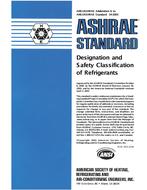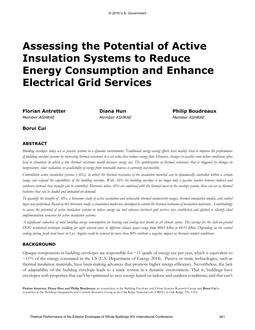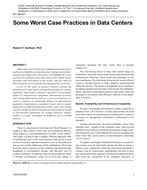Track: Systems and Equipment
Sponsor: 6.10 Fuels and Combustion, 6.1 Hydronic and Steam Equipment and Systems
Chair: Paul Sohler, Crown Boiler Company, Philadelphia, PA
Biomass use for heating offers many advantages and is important in large regions of the U.S. The technology is different from rapid-response fossil-fuel systems and there is a strong need for integrated designs where the boilers work in conjunction with a properly designed and controlled balance-of-plant. This seminar assembles leaders in the field of efficient, clean, integrated biomass heating systems and includes: a discussion of technologies and test methods for boilers; the valuable role that properly designed thermal energy storage systems play in enhancing performance and delivered efficiency of biomass heating installations; and sharing extensive experience from numerous field installations.
1. Efficiency and Emissions of Modern Hydronic Biomass-Fired Heating Systems
Thomas Butcher, Ph.D., Fellow ASHRAE, Brookhaven National Laboratory, Upton, NY
Use of renewable biomass for heating applications has been growing, driven by economics and benefits including use of local fuel resources and renewable aspects. Technologies are evolving rapidly and newer aspects include expanded use of sensor and control systems, two-stage and gasification combustion, integrated emission control and condensing heat recovery. The increased interest and new technologies create challenges for test methods which can accurately reflect the way these systems are installed and used in residential and commercial buildings. In this presentation, technologies, field use, tests methods and testing results are discussed.
2. Staging Biomass and Conventional Boilers for Optimal Energy Management
John Siegenthaler, P.E., Member, Appropriate Designs, Holland Patent, NY
Staging of multiple fossil-fuel boilers is a routine control requirement. When tasked with controlling the combination of a biomass boiler and fossil fuel boiler, control system designers will typically treat the biomass boiler as a "fixed lead" first stage, to be supplemented with the fossil-fuel boiler as a "lag" stage. This can work, but there are differences that must be respected to avoid issues that can cause increased energy consumption and lowered efficiency. This presentation describes those issues and shows simple control concepts to eliminate them and allow optimal management of thermal energy storage.
3. Numerous Lessons Learned from Biomass Heating System Commercial Installations in New York State
Khaled Yousef, P.E., Member, Pyramid Energy Engineering Services, Albany, NY
This presentation shares numerous lessons from several biomass heating systems installed at commercial sites. It covers varying sizes and a wide range of installations and layouts. Topics include sizing, controls, systems integration, Commissioning (Cx), Testing, Adjusting and Balancing (TAB), Thermal Energy Storage (TES), hydronics, venting, layouts, differences between stick-built vs. containerized plant options, and project roles and responsibilities. Also included is a list of valuable conclusions, recommendations, suggested next steps and valuable take home messages. Well-integrated and holistic project development approaches can support successful biomass installations. Attendees will acquire benefits and skills that are useful beyond biomass heating.
Presented: Wedsday, January 24, 2018, 8:00 AM – 9:30 AM
Run Time: 90 min.
This is a zip file that consists of PowerPoint slides synchronized with the audio-recording of the speaker (recorded presentation), PDF files of the slides, and audio only (mp3) for each presentation.
Citation: ASHRAE Seminar Recordings, 2018 Winter Conference, Chicago, IL
Product Details
- Published:
- 2018
- Units of Measure:
- Dual
- File Size:
- 1 file , 130 MB
- Product Code(s):
- D-CH18Sem53


